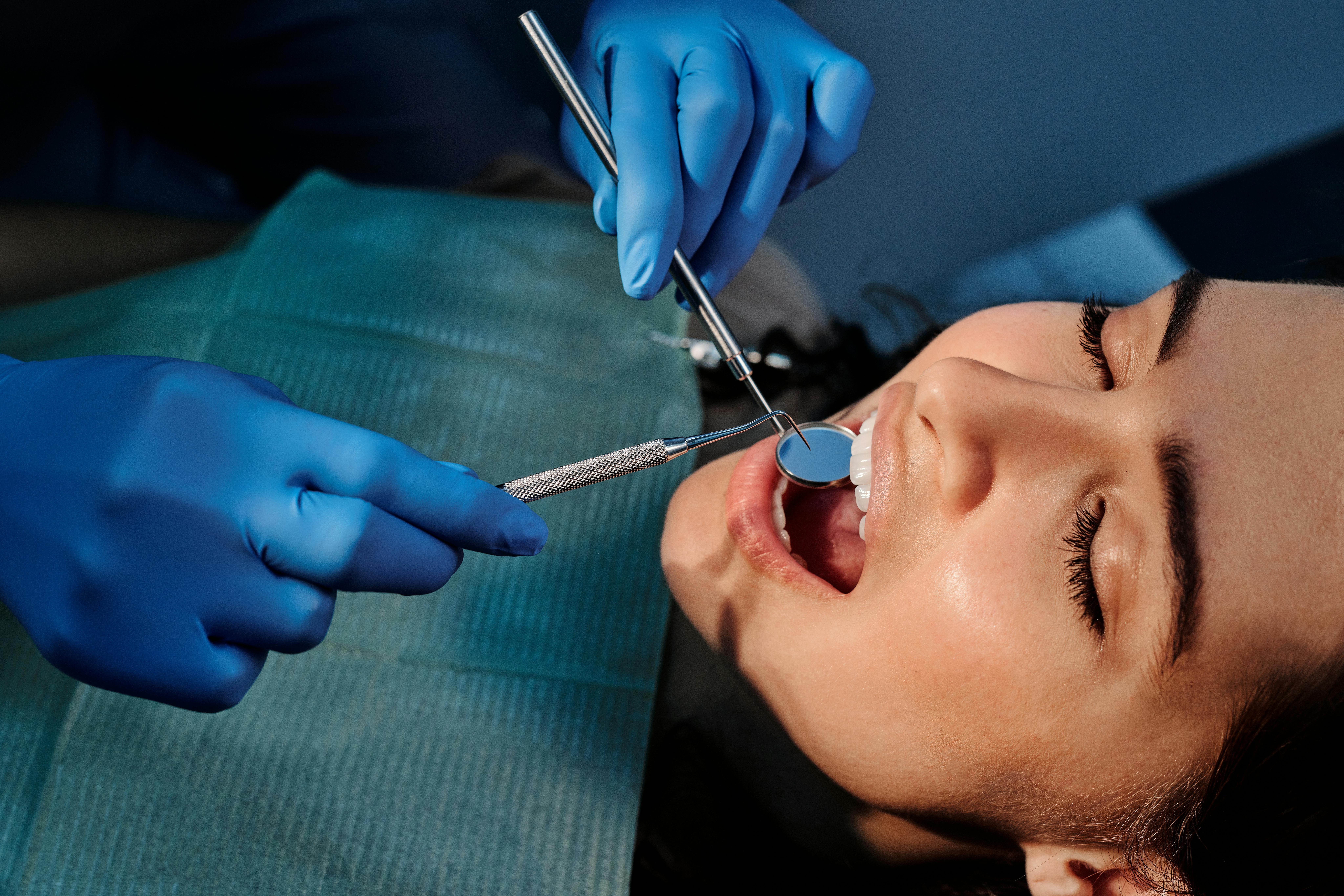Contouring vs. Orthodontics: Navigating Your Path to a Perfect Smile
November 22nd, 2023 | 4 min read

You’re standing in front of the mirror, contemplating your smile. Maybe you notice a tooth that’s slightly out of line, or perhaps you’re bothered by the gap that’s always been there. As you weigh your options, you might even recall a recent social event where you felt self-conscious about your smile.
You’ve heard of dental contouring and orthodontics, but which is the right choice for you? This article aims to guide you through the maze of options, helping you make an educated decision tailored to your unique dental needs.
What is Contouring?
Dental contouring is a specialized cosmetic dental procedure designed to enhance the aesthetics of your smile through subtle changes. By carefully removing a small amount of tooth enamel, the outer layer of the tooth, dentists can alter the shape, length, or even the surface texture of your teeth. This procedure is particularly beneficial for those looking to correct minor imperfections such as small chips, minor overlaps, or irregularly shaped teeth. Typically it can be completed in just one office visit. Dental contouring is not only convenient but also usually painless, often requiring no anesthesia. It serves as an easier cost-effective alternative to more expensive cosmetic dental treatments.

Advantages of Contouring
One of the benefits of dental contouring is its speed and lack of discomfort. Unlike other dental procedures that may require multiple visits or involve complex surgical techniques, contouring is often completed in a single appointment. This makes it an ideal choice for those with busy schedules or those who may be anxious about undergoing extensive dental work. The procedure itself is usually painless. Often requiring no anesthesia, which further adds to its appeal for those who may have dental anxieties.
Another compelling advantage of dental contouring is its cost-effectiveness. Contouring is generally more affordable when compared to other cosmetic dental options like veneers, crowns, or orthodontic treatments. This lower-cost option opens up the possibility of enhancing your smile to a wider range of patients, making it an option for those to spend less. The average cost in New York City could range from $75 to $125 per tooth. The affordability of contouring doesn’t compromise the quality of the results.
Disadvantages of Contouring
While dental contouring is excellent for addressing minor cosmetic issues, it’s important to understand that its scope is somewhat limited. This procedure is not designed to tackle severe dental problems. Some examples like significant misalignment, large gaps, or complex bite issues can not be fixed. If you’re dealing with more extensive dental concerns, other treatments like orthodontics will be more appropriate. Therefore, it’s crucial to have a thorough consultation with your dentist. There you can determine if contouring is the right solution for your specific needs.
Another consideration to keep in mind is that dental contouring involves the permanent removal of tooth enamel. Once this enamel is gone, it cannot be replaced, which could be a concern for individuals who already have thin or weak enamel. The loss of enamel can potentially make your teeth more susceptible to sensitivity or decay over time. For this reason, it’s essential to consult with a qualified dental professional to assess the condition of your enamel. Then you can determine whether contouring is a suitable option for you.
What is Orthodontics?
Orthodontics is a branch of dentistry dedicated to diagnosing, preventing, and treating teeth and jaws. Most commonly, orthodontics is a treatment of irregular alignment of teeth and jaws and irregular positioning of the teeth when the teeth are closed, called occlusion. Unlike dental contouring, which is generally a quick and straightforward procedure, orthodontics often involves a more extended commitment and a comprehensive approach to dental correction. The most commonly recognized form of orthodontic treatment is braces. Braces come in a variety of materials such as traditional metal, clear ceramics, and invisible aligners. These devices work by applying pressure over time to gradually move teeth into their proper positions.

The timeline of orthodontic treatment can vary widely. Depending on the complexity of the dental issues, more than one problem could be addressed. For minor adjustments, treatment may last only a few months. For more complicated cases, the treatment period can extend to several years. Orthodontics often requires a higher level of commitment from the patient. Time and compliance are needed when following the treatment plan. It’s also worth noting that orthodontic treatments often involve periodic adjustments. Follow-up visits are required to monitor progress making this process more involved than other dental treatments.
Advantages of Orthodontics
One of the most compelling advantages of orthodontic treatment is its ability to address a wide range of dental issues. Unlike more limited treatments like dental contouring, orthodontics can correct everything from minor cosmetic concerns to severe functional problems. This includes issues like crooked teeth, overbites, underbites, crossbites, and even more complex conditions involving the jaw and facial structure. The versatility of orthodontic treatment makes it a one-stop solution for many patients. It eliminates the need for multiple procedures and provides a holistic approach to dental health.
Another significant benefit of orthodontic treatment is the durability of the results. The treatment is complete once the teeth have moved into their desired positions. The outcome is generally long-lasting and provides a lifetime of improved dental aesthetics and functionality.
This long-term effectiveness makes the investment in orthodontic treatment highly worthwhile for many patients. To maintain these results, however, it’s often necessary to follow up with some form of retention. This could be like wearing a retainer, to ensure that the teeth do not revert to their previous positions. Orthodontic results offer a long-term solution for a wide array of dental issues. It is a highly attractive option for those looking for a permanent improvement in their smile.
Disadvantages of Orthodontics
One of the primary drawbacks of orthodontic treatment is the time commitment it often requires. Orthodontic treatments can span several months to even a few years, depending on the complexity of the case. This timeframe can be an obstacle for busy individuals or those who may be relocating. Some would find it challenging to commit to regular appointments for adjustments and check-ups. There is a need for ongoing maintenance, such as wearing retainers after the main treatment phase. This adds to the time commitment, making it a long-term investment in your dental health.

Another factor to consider is the financial investment involved in orthodontic treatment. Orthodontic procedures can be quite expensive. For example, braces themself can range from $4,000 to $10,000. The costs can include not only the orthodontic devices themselves but also the fees for regular adjustments, check-ups, and sometimes even additional treatments like extractions or surgeries to achieve the desired results. While many dental insurance plans do offer some coverage for orthodontic care, it’s often limited. This leaves a significant portion to be covered out-of-pocket. The financial aspect is an important consideration when weighing the pros and cons of opting for orthodontic treatment.
Your Smile, Your Choice
When it comes to enhancing your smile, both contouring and orthodontics offer valuable solutions. Contouring is quick and for minor adjustments. Therefore, orthodontics provides an approach for more complex dental issues. Both treatments offer unique advantages and considerations. The best choice depends on your individual dental needs, budget, and time constraints.
Interested in Dental Contouring?
Our Contouring Section offers more information to help you understand what to expect.
Curious About Orthodontics?
Our Orthodontics Section provides detailed insights into various orthodontic options.
Ultimately, the choice is yours to make, and this guide aims to provide you with the information you need to make that decision confidently.
Topics:

